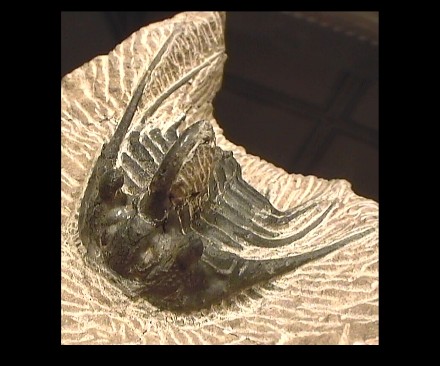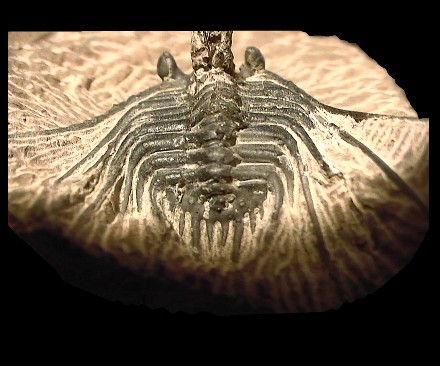Kettneraspis sp.
Morrocan Devonian Trilobite, this specimen remains undescribed in the litterature. So this page will be a very short one, just to let know to the reader that what is called the "Stovepipe Leonaspis" is an unidentified species of Kettneraspis.
I'll update this page as soon as I get a few papers (amongst them : Ramskold, Lars & Chatterton, B.D.E. (1991) Revision and subdivision of the polyphyletic 'Leonaspis' (Trilobita). Trans. Royal Society Edinburgh, Earth Sciences 82 : pp. 333 - 371).
|
|
|
|
|
Oblic view of the specimen
|
Study of the thorax and the pygidium
|
|
Specimen description :
|
Diagnosis :
|
Order
|
Lichida
|
MOORE 1959
|
Typically spiny with densely granulate or tuberculate exoskeletons.
Occurrence: Cambrian to Devonian (Frasnian)
- Cephalon: Opisthoparian sutures.
- Glabella broad, large, extending to anterior border.
- Lobation simple (Dameselloidea & Odontopleuroidea) to complex with
fused lateral and glabellar lobes (Lichoidea).
- Eyes typically present, holochroal, usually not large
- Conterminant hypostome.
- Thorax : Variable, 8-13 segments.
- Usually spine-tipped, sometimes with distinctive spines (e.g., Odontopleuroidea).
- Pygidium : Typically isopygous to macropygous, but sometimes
short (e.g., Odontopleuroidea).
- Often longer than wide.
- Often with 3 pairs of furrowed pleurae, typically ending in spinose
tips.
|
|
Super-family
|
Odontopleuridea
|
WHITTINGTON 1959
|
Typically very spinose and densely sculptured trilobites.
Occurence : Upper Cambrian to Devonian.
- Cephalon : Convex.
- Glabella tapering forward or subparallel, extending to anterior margin
or nearly so.
- Less complex lobation than in Lichoidea.
- Eye ridges run from anterior end of glabella to palpebral lobe.
- Opisthoparian sutures, often placed on sutural ridges.
- Distinct notch in margin of free cheek adjacent to where anterior
sutures cut cephalic margin.
- Facial sutures secondarily lost in some genera.
- Short genal spines typically present, sharp-edged.
- Occipital ring frequently elongate behind of the genal areas, with
one or a pair of spine or tubercle.
- Typically quadratic or subrectangular hypostoma, with small anterior
wings and no posterior wings.
- Thorax: 8 – 10 segments.
- Tips of each bear 2 – 3 pairs of spines (anterior pair often difficult
to see, ventrally directed).
- Often with symmetrical row arrangements of pleural spines or tubercles.
- Pygidium: micropygous, short, transverse.
- 2 – 3 axial rings (3rd often faint).
- One or more pairs of tubular border spines, the largest of which connected
to first axial ring by prominent ridge.
|
|
Family
|
Odontopleuridæ
|
BURMEISTER 1843
|
|
|
Sub-family
|
Odontopleurinæ |
BURMEISTER 1843
|
- Cephalon : Glabella slightly or firmly widening forward.
- Eyes rather posteriorly situated.
- External angle between anterior or posterior sections of sutures adjacent
to eye lobes 90 to 120°.
- Hypostoma wider than long.
- Pygidium : Proeminent pair of border spines with 1 or 2 pairs
of small spines between them.
|
|
Genera
|
Kettneraspis (= Grossia)
|
PRANTL & PRIBYL 1949
|
- pygidium : 1 or 2 pairs of small spines between the proeminent
pair.
|
|
Species
|
sp.
|
-
|
|
Discussion :
This specimen of Odontopleurid doens't appear to be reported in the litterature
yet, even after CHATTERTON et al. published recently a paper about moroccan trilobites. This page has for sole aim to indicate the readers and the collectors that
this trilobite seems to belong to a new species of Kettneraspis (and
is probably not a rarity). For more informations, the reader can refer to :
Whittington, H.B. 2002. Lichidae (Trilobita): Morphology and classification.
J. Paleontology 76(2) : pp. 306 - 320.
Jell P.A.and Adrain J.M.. 2003. Available generic Names for Trilobites. Memoirs
of the Queensland Museum, 48, 2 : pp. 331 - 553.
Complementary pictures :
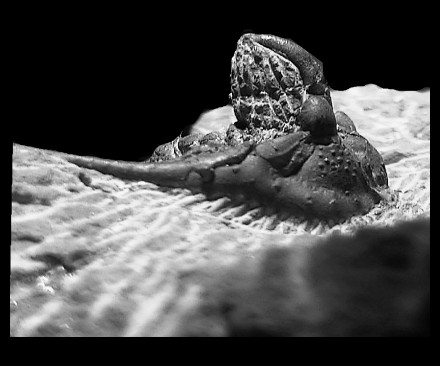 |
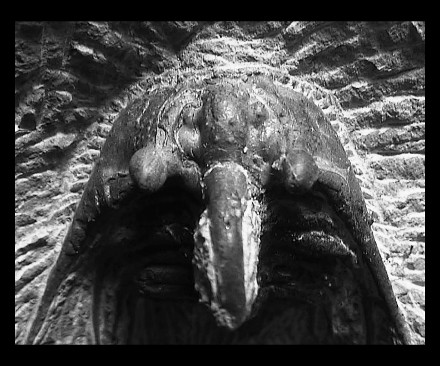 |
|
Right lateral view of the cephalon
|
Dorsal view of the cephalon.
|
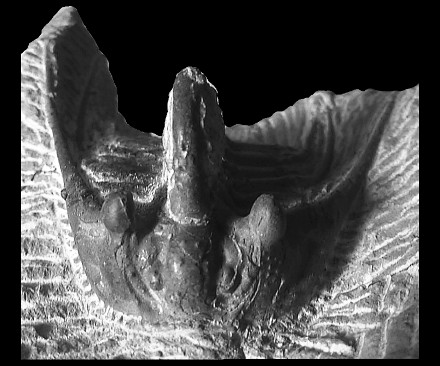 |
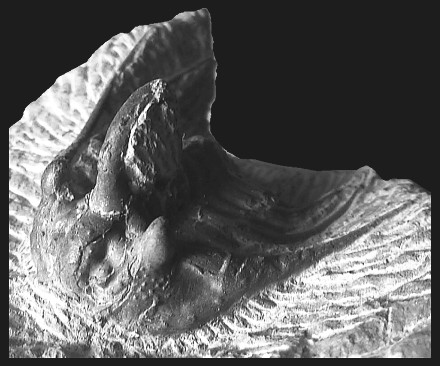 |
|
Study of the glabella and the lobation.
|
Study of the glabella and the lobation.
|
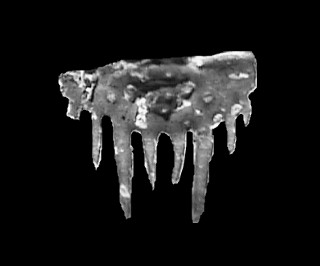 |
|
"Kettneraspis"-type pygidium.
|
Differential diagnostic :
CHATTERTON et al. just described numerous species from the Devonian of the Timrhanrhat Formation (Jbel Gara el Zguilma, southern Morocco). One of them looks closely like this Kettneraspis sp. but clearly possesses a Leonaspis-type pygidium. They named it Leonaspis spinicurva ; it is differentiated by a much more slender, longer occipital spine with the classic Leonaspis-type pygidium (two pairs of small spines between the major spines) while the Kettneraspis-type pygidium has a single
pair of small spines between the major spines.
They are clearly different species and this Kettneraspis sp. remains undescribed.
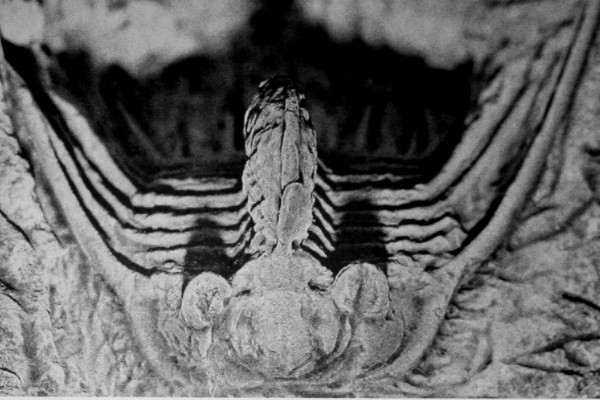 |
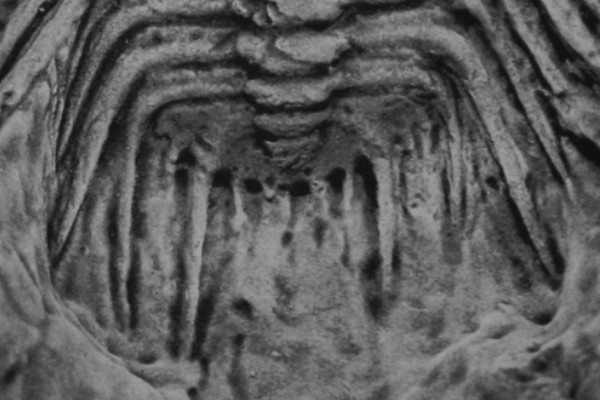 |
Frontal view of the cephalon of Leonaspis spinicurva CHATTERTON et al. 2006. After Chatterton et al. 2006.
|
Dorsal view of the pygidium of Leonaspis spinicurva CHATTERTON et al. 2006. After Chatterton et al. 2006.
|
Another (great) specimen :
Another morrocan Ketteneraspis sp., property of Dave Comfort. Note the
excellent preparation work on the thoracic pleural spines or on the genæ.
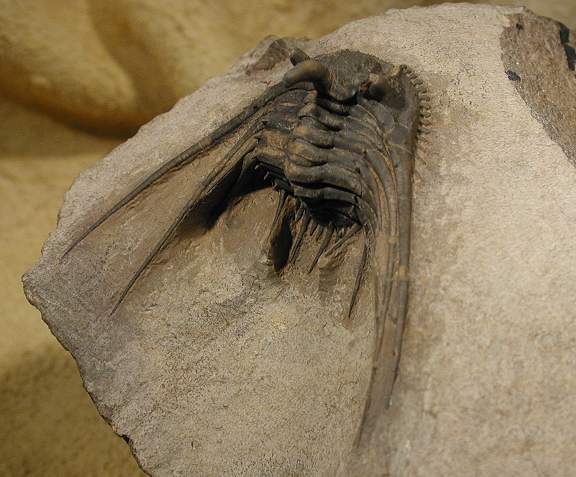 |
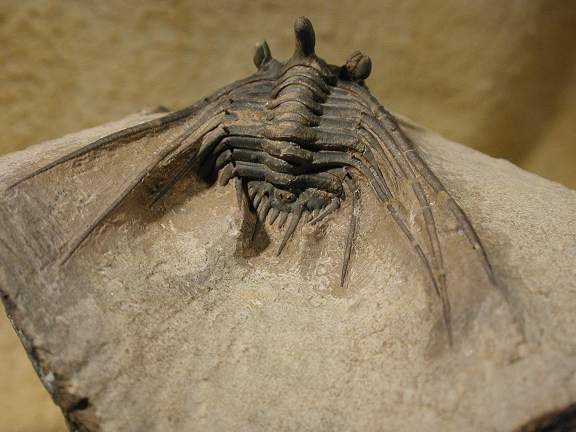 |
|
Full specimen
|
Dorsal view.
|
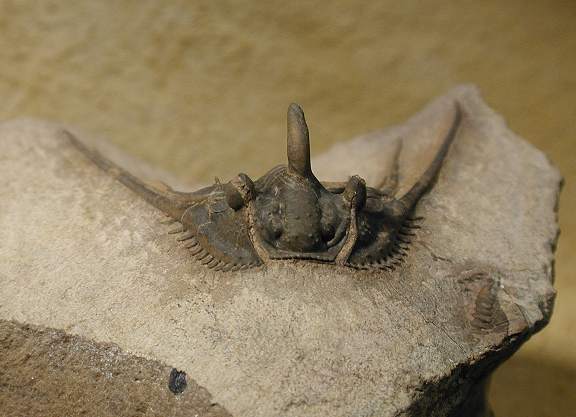 |
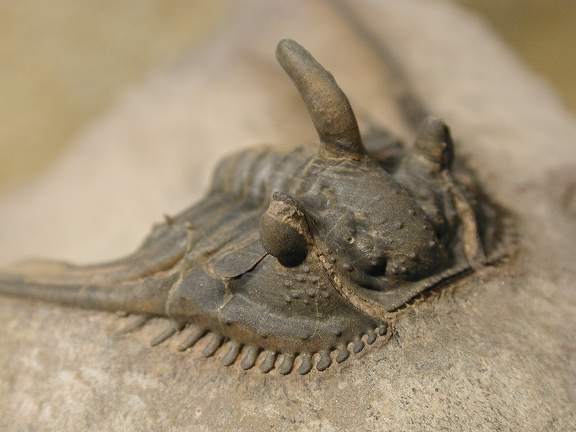 |
|
Frontal view of the Cephalon
|
The right librigena.
|
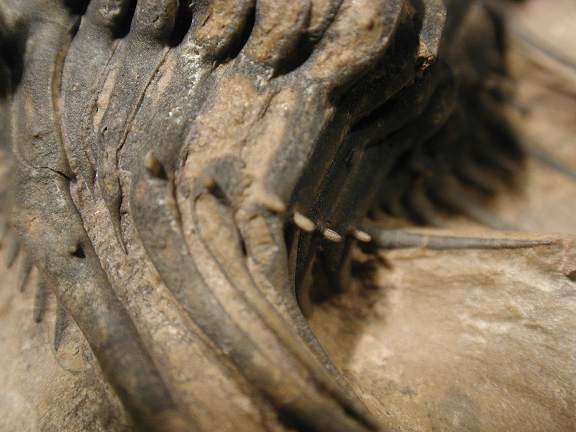 |
|
Thoracic pleural spines.
|
Back
to home page
